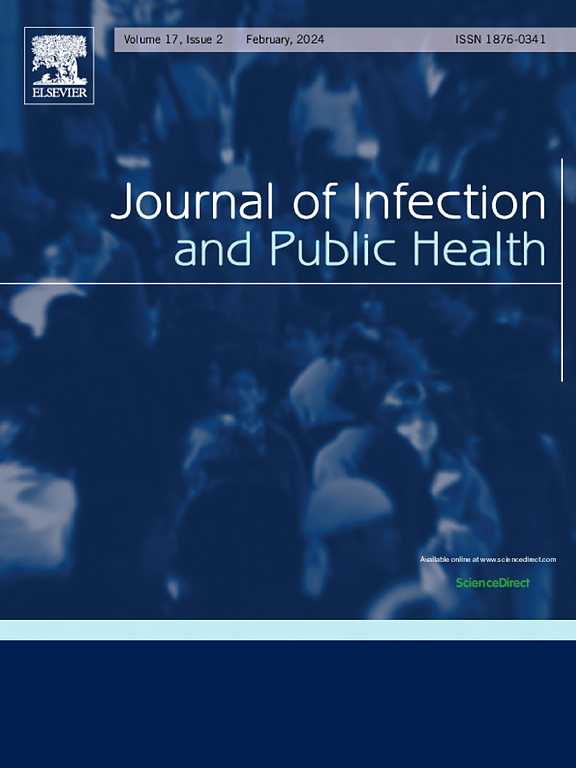2019冠状病毒病期间和之后澳大利亚季节性流感模式的变化:一项综合分析
IF 4.7
3区 医学
Q1 INFECTIOUS DISEASES
引用次数: 0
摘要
背景:在2019冠状病毒病大流行期间,全球范围内的季节性流感病毒传播受到了严重抑制。在澳大利亚,自该病毒于2022年再次出现以来,已观察到季节性流感模式的变化。2022年和2023年流感季的开始时间都早于大流行前的标准,并被归类为中度至重度,这突显了季节性流感预防战略的重要性。方法:我们分析了来自澳大利亚国家法定传染病监测系统(2012-2022)的流感通报数据和来自FluNet数据库(2012-2023)的病毒学监测数据。使用广义加性模型,我们比较了2020-2022年期间预测的每周流感病例数与观察到的病例数。采用负二项阈值检测流行周,使用贝叶斯泊松计数检测算法估计流行发作。比较了不同流感病毒类型和亚型的流行程度和发病时间在covid -19之前、期间和之后的趋势。结果:季节性流感活动在2020年和2021年几乎没有,但在2022年和2023年明显反弹。疫情检测证实在大流行期间抑制了季节性流感传播。甲型流感亚型在2022年回到大流行前的发病时间,而乙型流感的发病时间明显推迟。2022年和2023年流感季为中度至重度,流感季开始时间早于平均水平,突显了大流行后流感动态的持续变化。结论:本研究详细分析了2019冠状病毒病大流行期间和之后澳大利亚季节性流感模式的中断和随后的变化。2022年和2023年流感活动的迅速复苏,加上发病时间的改变,凸显了持续监测和适应性预测模型的重要性,以应对大流行后时代流感流行病学不断演变的复杂性。本文章由计算机程序翻译,如有差异,请以英文原文为准。
Shifts in seasonal influenza patterns in Australia during and after COVID-19: A comprehensive analysis
Background
During the COVID-19 pandemic, seasonal influenza virus circulation was heavily suppressed worldwide. In Australia, since the virus re-emerged in 2022, shifts in seasonal influenza patterns have been observed. Both the 2022 and 2023 seasons started earlier than pre-pandemic norms and were categorised as moderate to severe, highlighting the renewed importance of prevention strategies for seasonal influenza.
Methods
We analysed influenza notification data from the Australian National Notifiable Diseases Surveillance System (2012–2022) and virological surveillance data from the FluNet database (2012–2023). Using generalised additive models, we compared predicted weekly influenza case counts during 2020–2022 with observed counts. Epidemic weeks were detected using a negative binomial threshold, and epidemic onset was estimated with a Bayesian Poisson count detection algorithm. Trends in epidemic magnitude and onset timing across influenza virus types and subtypes were compared for pre-, during, and post-COVID-19 periods.
Results
Seasonal influenza activity was nearly absent in 2020 and 2021 but rebounded significantly in 2022 and 2023. Epidemic detection confirmed suppressed seasonal influenza circulation during the pandemic. While influenza A subtypes returned to pre-pandemic onset timings in 2022, influenza B exhibited a significantly delayed onset. The 2022 and 2023 seasons were moderate to severe, with earlier-than-average season starts, underscoring the ongoing changes in influenza dynamics post-pandemic.
Conclusions
This study provided a detailed analysis of the disruptions and subsequent shifts in seasonal influenza patterns in Australia during and after the COVID-19 pandemic. The rapid resurgence of influenza activity in 2022 and 2023, combined with altered onset timings, highlights the importance of ongoing surveillance and adaptive forecasting models to address the evolving complexity of influenza epidemiology in the post-pandemic era.
求助全文
通过发布文献求助,成功后即可免费获取论文全文。
去求助
来源期刊

Journal of Infection and Public Health
PUBLIC, ENVIRONMENTAL & OCCUPATIONAL HEALTH -INFECTIOUS DISEASES
CiteScore
13.10
自引率
1.50%
发文量
203
审稿时长
96 days
期刊介绍:
The Journal of Infection and Public Health, first official journal of the Saudi Arabian Ministry of National Guard Health Affairs, King Saud Bin Abdulaziz University for Health Sciences and the Saudi Association for Public Health, aims to be the foremost scientific, peer-reviewed journal encompassing infection prevention and control, microbiology, infectious diseases, public health and the application of healthcare epidemiology to the evaluation of health outcomes. The point of view of the journal is that infection and public health are closely intertwined and that advances in one area will have positive consequences on the other.
The journal will be useful to all health professionals who are partners in the management of patients with communicable diseases, keeping them up to date. The journal is proud to have an international and diverse editorial board that will assist and facilitate the publication of articles that reflect a global view on infection control and public health, as well as emphasizing our focus on supporting the needs of public health practitioners.
It is our aim to improve healthcare by reducing risk of infection and related adverse outcomes by critical review, selection, and dissemination of new and relevant information in the field of infection control, public health and infectious diseases in all healthcare settings and the community.
 求助内容:
求助内容: 应助结果提醒方式:
应助结果提醒方式:


